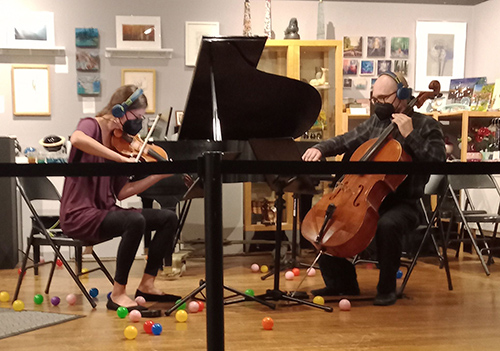by Daniel Hathaway

That only added to the fun and sense of engagement that’s always embedded in a No Exit concert, and on Saturday evening, October 2, listeners could witness the expertise of the musicians at close hand.
Proceedings got off to a dramatic — and amusing — start with Rinderknecht’s solo performance of Agata Zubel’s Mono-drum (2020). The percussionist began tickling the Gran cassa with brushes, then changed to various drumsticks as the voice of the bass drum gained in intensity.



Artistic director Timothy Beyer’s Amputate III dates back to 2011, and its title foreshadows a fearsome piece of music that, if it doesn’t suggest the experience of having a limb sawed off, at least replicates the kind of feeling you get on a death-defying amusement park ride (this is horrible, but bring it on!) Beyer created the bold and sometimes deafening tape track by recording himself cutting through meat and bone “using antique surgical instruments,” and writes that he intended “to evoke a sense of emotional, psychological, and spiritual amputation” in ruminating on “the experience of profound loss.”

The concert ended with Jiří Trtík’s Forest City, which the Czech composer, who spent four winters studying in Cleveland, came back to hear. Speaking to the audience, his charming introduction invoked the white stillness of a Northeast Ohio winter, under which a lot of unseen activity is going on.

Published on ClevelandClassical.com October 5, 2021.
Click here for a printable copy of this article



